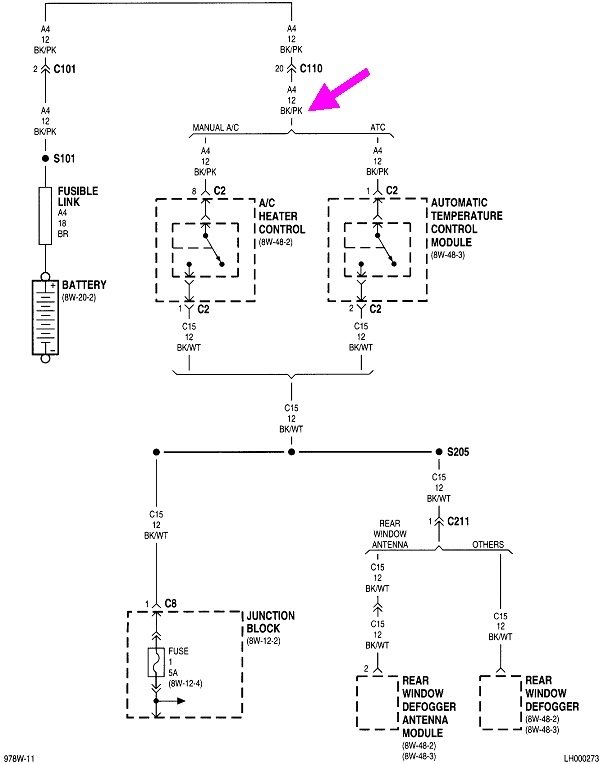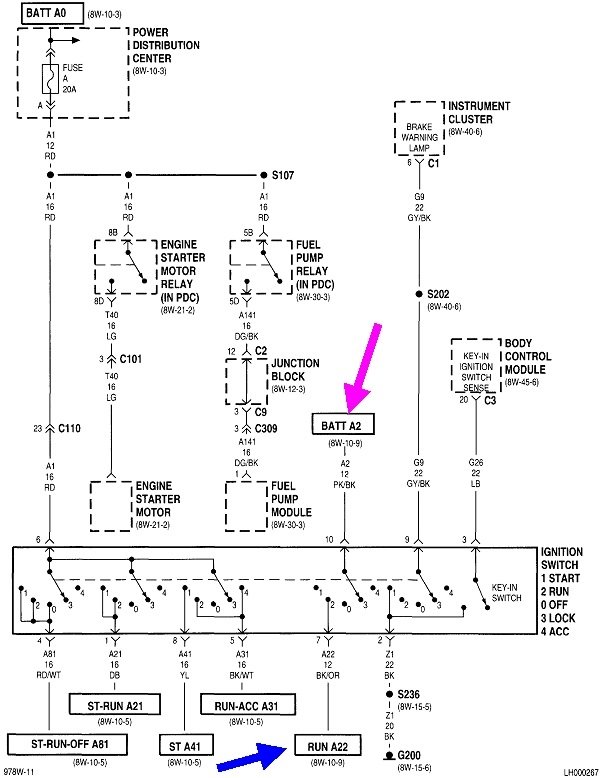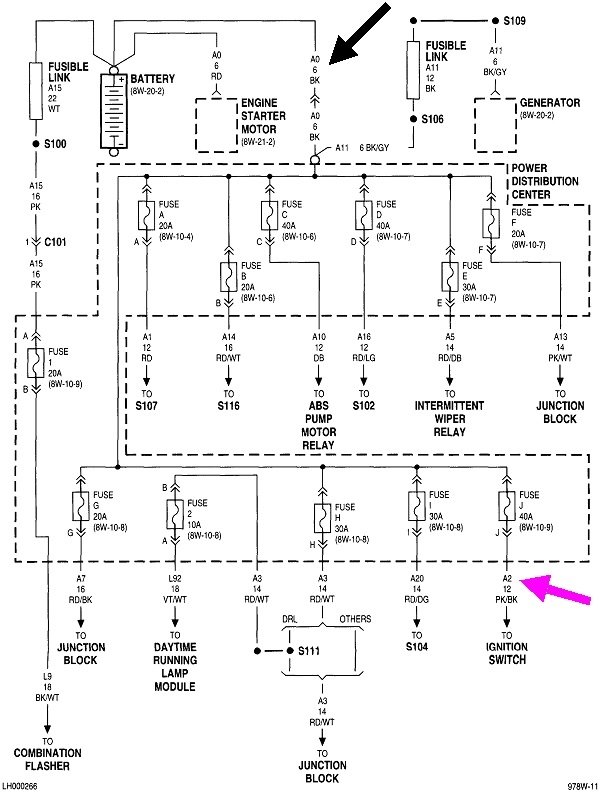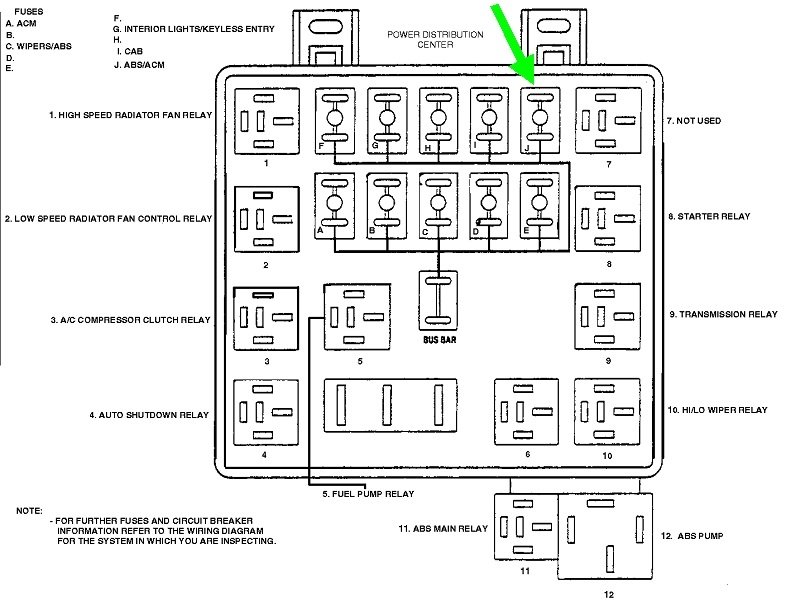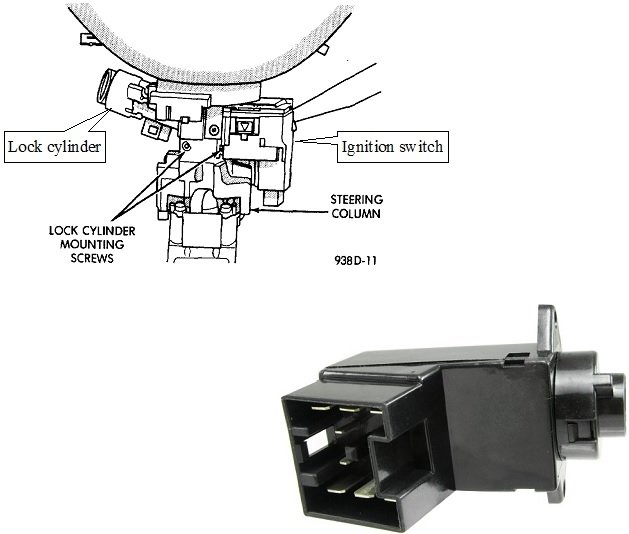It sounds like you know the area the cause of this problem is in. With multiple dead systems, pick one to start with, then when we solve that, we're likely to solve everything. I picked the power windows, but if that wire is the culprit, you should have quite a few other dead systems besides what you listed.
I apologize that these diagrams are kind of hard to read. If you copy and paste them into an MS Word typing program, you can make them bigger. The second one is for part of the power windows. You'll see way at the top it shows this is fed by circuit "A22" that is live with the ignition switch in the "Run" position.
In the third diagram, the blue arrow at the bottom shows that "Run A22" circuit coming off the ignition switch. Follow that back and you'll see that section of the ignition switch is fed by circuit, "Battery A2".
The fourth diagram is part of the Power Distribution Center, (under-hood fuse box),and it shows that feed, "Battery A2" at the bottom right. It is protected by fuse "J", a 40-amp. That will be a large maxi-fuse. If that fuse is blown, only the systems controlled by that part of the ignition switch will be dead. Other easily-identified circuits will be still working. Those include the delayed wipers and the anti-lock brake pump motor. If those systems work properly, the wire you were looking at has to be okay, and it's fuse "J" we have to start with. That is pointed out by the green arrow in the fifth drawing.
If all those other systems are dead too, we have to work back further. In the fourth diagram, that part of the fuse box is fed by circuit "A0", a 6-gauge black wire, (shown by my black arrow), and that comes right off the battery's positive cable clamp.
For this type of problem, voltage readings are really only valid when they're taken while the circuit is fully connected and trying to operate. One place to start is by pulling out fuse "J", then checking for voltage on one of the terminals in the socket, but by pulling it out, that breaks the circuit. That has the potential to give a false "good" voltage reading. One way to draw some current is to use a test light instead of a digital voltmeter. If there's a break in that black wire, all it takes a tiny speck of corrosion across the break, or just one tiny strand of wire still intact, for the meter to show what looks like 12 volts, which we'd interpret as okay, but there's no way to get enough current through that break to run the circuits. A test light needs current to flow to do its thing, so it will be more accurate.
If you need a test light, you can find a perfectly fine one for around $4.00 at Harbor Freight Tools, Walmart, or any hardware store. Here's an article on using it, if you need it:
https://www.2carpros.com/articles/how-to-use-a-test-light-circuit-tester
Remove fuse "J", then check for 12 volts on the two terminals in the socket. It should be on one of them. If it's missing on both, recheck that black wire. If you have 12 volts on one terminal, we'll have to work the other way to solve this.
Images (Click to make bigger)
Wednesday, February 10th, 2021 AT 5:14 PM
